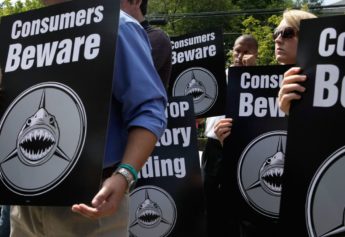The United States is increasingly consisting of less diverse neighborhoods as more Americans strive to surround themselves with others of similar financial means to fuel a rise a residential segregation.
The so-called “income gap” might be greater today than even in the colonial times that included slavery, according to one study.
“Thirty years ago, about nine percent of all upper-income people lived in predominantly upper-income neighborhoods,” Paul Taylor of the Pew Research Center told National Public Radio. “That share has now doubled to 18 percent.”
Taylor recently co-authored a study that tracked the income gap increase between 1980 and 2010.
He tells Jacki Lyden, guest host of weekends on All Things Considered, that this is a national trend. But, he adds, locally several factors can contribute to residential segregation by income, including in-migration, the nature of the local economy, housing discrimination and even a city’s physical layout.
Although it might seem self-evident that people of similar incomes would gravitate toward one another, Taylor says the problem is that it creates an increasingly polarized electorate.
Residential segregation also makes it easier when it comes to gerrymandering, or redrawing district boundaries. Taylor says that increasingly the people who draw those lines do so in order to create “safe” districts, whether for Republicans or Democrats.
The Shaw neighborhood in Washington, D.C., is one such example as it is rich in history, while not always having been so stable. Home to Duke Ellington, the area has historically been at the center of black culture in the city, and was once a gathering place for black artists and professionals.
In the 1960s, the neighborhood was severely affected by the damage caused by riots after the assassination of Martin Luther King Jr.
The period of decline that followed, however, is now reversing. Over the past 20 years, about 1,000 new people have moved in to the neighborhood, many of whom are high-income residents. Adjusted for inflation, the average family incomes in and around Shaw in 1979 was less than $50,000. Today, it has more than doubled.
“The question is whether that is a sustainable mix, or whether this will take time and we’re [just] going to see all upper-income people,” said Peter Tatian, a researcher at the Urban Institute.
While the mix today is economically diverse, Tatian says that if you look at the trend, it’s hard not to be pessimistic about what the future might hold.
The Shaw neighborhood is just one example of where residential segregation by income is taking place, but the Pew study also shows that this trend happens to be most extreme in one place: Texas.
An abundance of more readily-available land in Dallas, Houston and San Antonio means that about a quarter of upper-income households are in majority upper-income areas.
Rice University sociologist Stephen Klineberg says people tend to be uncomfortable when large numbers of people have much more money or less money than we do.
Klineberg said that this segregation by income is causing America to forfeit the social capital received by living in a mixed neighborhood.
“Social capital connects you to the opportunities that are out there,” he says. “When you’re segregated by income, it means that there’s an isolation of the rich … with no real sense of how the other half of American is living and struggling today.”
Likewise, Klineberg says that if you’re isolated as a poor person, you have no access to the opportunities, networks and information systems that occur when people are part of a single community.


